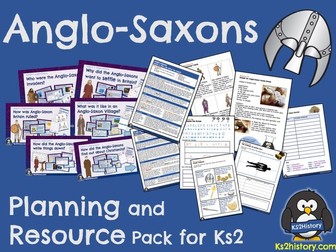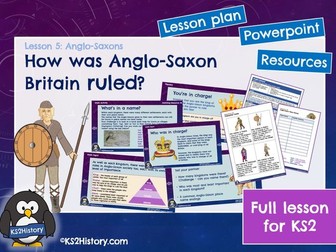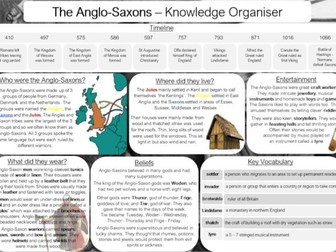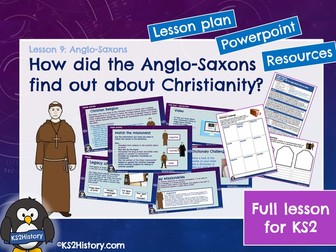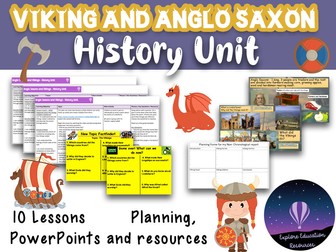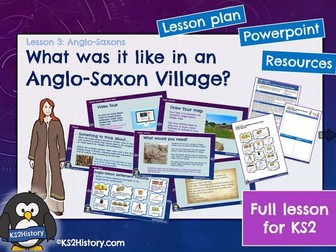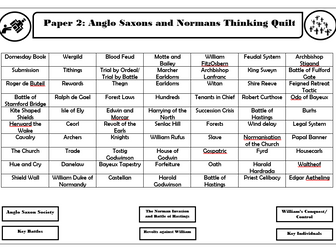
Anglo-Saxons Planning Pack
A fully-resourced unit of 10 history lessons for KS2, covering the Anglo-Saxon topic. This KS2History planning pack includes 10 detailed lessons plans, each with accompanying pupil resource sheets and Powerpoint slides.
The ten sessions in this unit aim to give an overview of the Anglo-Saxon period in Britain and to highlight some of the major changes during this period. There is an emphasis on allowing pupils to consider the sources of evidence that form our understanding of this period of British history.
The aims of the unit for pupils are:
To gain an overview of the significant people and events during the Anglo-Saxon period in Britain.
To contrast everyday life during the Anglo-Saxon period with modern British lifestyles.
To consider broader historical themes of invading and settling before a time when Britain was unified under a single monarch.
To become familiar with historical sources and accurate vocabulary relating to the Anglo-Saxon period.
This pack contains everything you need to teach this unit, including differentiated activity ideas so that it can be adapted to the needs of your class. The Powerpoint text is also editable.
The planning pack covers the following lessons:
Who were the Anglo-Saxon invaders?
Why did the Anglo-Saxons want to settle in Britain?
What was it like in an Anglo-Saxon village?
What kind of clothes did the Anglo-Saxons wear?
How was Anglo-Saxon Britain ruled?
Who was Alfred the Great?
What was Anglo-Saxon food and drink like?
How did the Anglo-Saxons write things down?
How did the Anglo-Saxons find out about Christianity?
What was the mystery of Sutton Hoo?
This pack is brought to you from Ks2history. #lovehistory #maymadness
You may also like our KS2 Beowulf Literacy Planning Pack.
